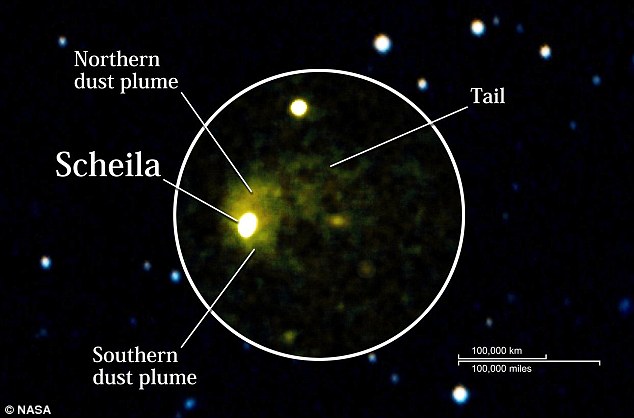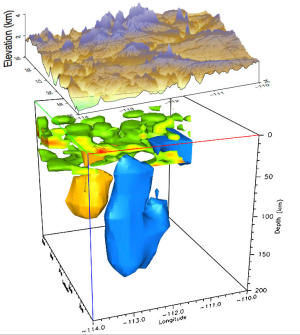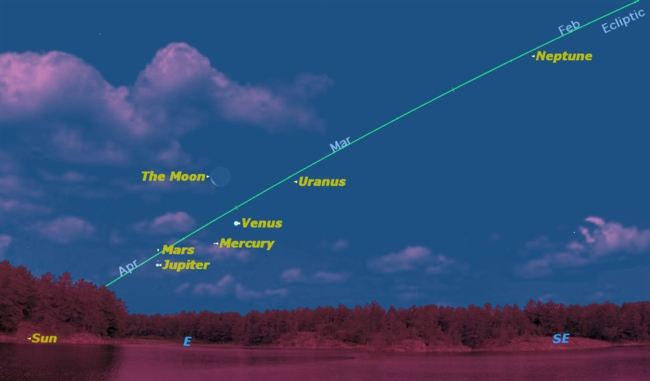The aftermath of the impact on Scheila was first spotted by the University of Arrizona's Catalina Sky Survey on December 11 last year.
It revealed Scheila to be twice as bright as expected and immersed in a faint comet-like glow.

Data from Nasa's Swift satellite and Hubble Space Telescope then showed these changes likely occurred after Scheila was struck by a much smaller asteroid.
'Collisions between asteroids create rock fragments, from fine dust to huge boulders, that impact planets and their moons,' said lead Swift researcher Dennis Bodewits, from the University of Maryland.
'Yet this is the first time we've been able to catch one just weeks after the smash-up, long before the evidence fades away.'
Asteroids are rocky fragments thought to be debris from the formation and evolution of the solar system approximately 4.6billion years ago.












Comment: The article says: "Ejecta kicked up by Deep Impact contained lots of ice, and the absence of ice in Scheila's interior shows that it's entirely unlike comets." But perhaps it isn't entirely true, and comets are not the "dirty snowballs" we are led to believe by NASA scientists. Read Planet-X, Comets and Earth Changes by J.M. McCanney to learn more.